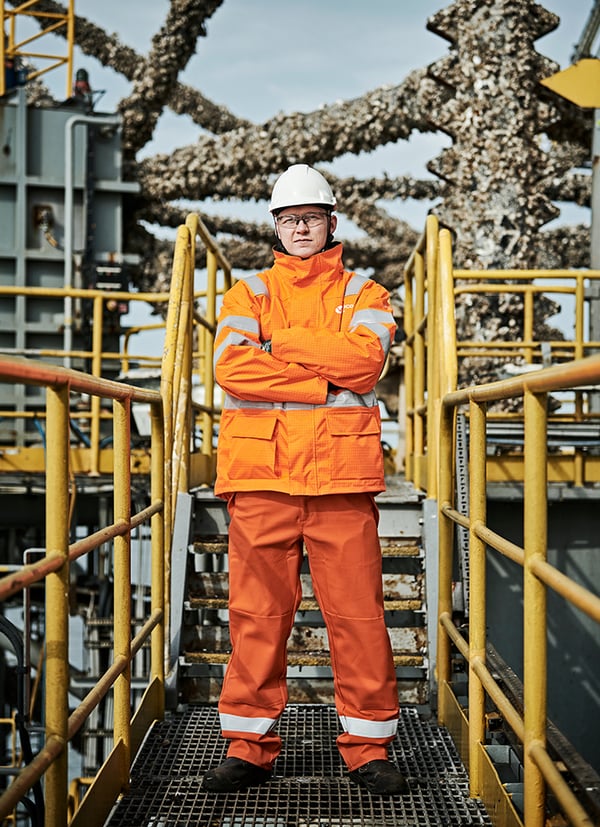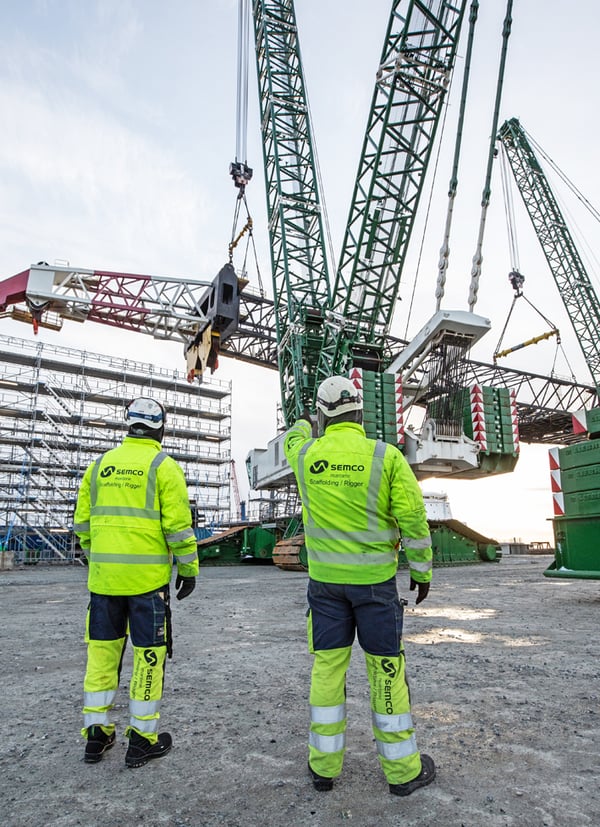How to scare birds with a Bird Deterrent System
Download free e-book
1. The problem with birds on helidecks
2. Why birds are a threat to your offshore business
The consequences of seabirds staying on your offshore facilities, such as helidecks and offshore installations, have a negative impact on a number of things, especially Health Safety & Environment.
Not only does guano, crab remains, and seashells create health and safety risks, which are serious problems on their own, but the wear and tear of acidic bird droppings also require extensive cleaning and ultimately repainting of facilities.
In addition, there are economic consequences associated with the downtime created when guano puts everyone on hold, like the costs of helicopters returning to shore due to unapproachable and contaminated helidecks.
The biggest problems that Guano can cause:
Seagull guano, in particular, poses a health hazard to people working on platforms and offshore facilities due to the risk of salmonella, an infectious bacterial disease. Facilities littered with bird droppings are especially hazardous when guano dries. When helicopters land on the helidecks, the workers on site, helicopter pilot, and crew risk inhaling the dust from the salmonella-infected droppings – dust dispersed into the air either by being sucked into the helicopter’s ventilation or spread by the turbulence generated by the rotors.
When a helideck is covered in bird droppings, it can be impossible for a pilot to detect where to land on the helideck area scheme. If the otherwise illuminated ‘H’ and the surrounding circle are covered, the black hole approach may be required. With the CAP 437 Standards for Offshore Helicopter Landing Areas, it is not legal to land on a poorly lit helideck, forcing helicopters ultimately to return to shore. This commonly happens on unattended platforms, but also at facilities with lots of activity, since helidecks are always placed in remote areas in the outskirts of the platform due to aviation regulations.
Another security risk arises when seabirds leave crab remains on the deck and drop mussels from the air to break the seashells. Guano and the remains of crabs and mussels can get sucked into helicopter engines and cause damage or worse: accidents. Even if the optimal visual conditions to land are fulfilled, the deck can be as slippery as soap if the guano is still wet. This is not a problem for the approaching helicopter but can be a potential danger for the disembarking passengers, who also have to cross the helideck.
When a helicopter cannot land on a helipad - because the deck is covered in droppings from seabirds and other remains – it might risk having to return to shore with the new chain crew. This is an expensive loss. A hired helicopter can easily cost 50,000 € per ride. The bill escalates when the old crew is not replaced on the platform, affecting and increasing the cost of wages. In addition, you may need spare parts or specialists to fix a problem, which cannot be solved if the helicopter is unable to land, thus extending potential downtime. This means that the supply chain and work stop until the area has been cleaned, allowing the helicopter to land.
As if these consequences were not enough, the need for comprehensive cleaning is crucial if pest birds have contaminated your facility – whether it is an offshore oil or gas rig, a helideck, or wind turbines and offshore substations. None of these are easy to access, particularly not for installations offshore where the cleaning process is tricky. Top that with a limited possibility of doing business during the clean-up.
Acidic guano ruins paint
After the clean-up, maintenance and the repainting of the affected areas begin. However, since seabird guano can contain massive amounts of acid, and cormorants’ droppings even more, paint tainted by the guano can come undone while washing the affected areas. Maintaining offshore facilities is extremely expensive due to the inherent inaccessibility and materials. Just cleaning, repainting, and replacing the safety net on a helideck is a costly affair.
3. Well-known bird deterring methods
Birds on offshore installations will most likely find remote areas to rest and nest – such as helidecks or the laydown area. Even though there might be some activity in terms of human movement and containers and equipment being loaded, it will probably not be enough to keep the birds away. However, there are a number of well-known ways to scare them away:
The most important step in keeping pest birds away is to prevent them from settling down in the first place. This is key when dealing with flocks of birds. Once you have one gull resting on your facility, it is only a matter of time before the headcount increases drastically.
It can be hard to avoid birds if your business is surrounded by an abundance of food such as crops in a field or an ocean full of fish and shellfish. Prevention in terms of scaring off the birds before they settle down is even more important if your offshore facility lacks human activity like an unattended oil rig or an offshore substation.
The use of spikes and netting to prevent larger birds from landing is mostly employed on top of buildings and rails where personnel does not work or operate. However, small birds can easily overcome these barriers. You can also disturb the nests and destroy the eggs by using a long stick. This will make the birds feel unsafe and the environment unpredictable.
Scarecrows and predator decoys are simple and widespread deterrents, but inefficient. Another option is to use the wind to create movement in materials such as aluminium foil or twisting scare rods – an inefficient method that can hardly keep birds away from your own garden.
If your bird problem is massive, traps are not your best choice. Also, lethal traps are only permitted for certain species that are not protected by the law. The rest of the captives must be released, which requires a lot of manpower.
5. Chemicals
Another way to repel birds is by using chemicals that cause irritation when consumed or affect the birds’ nervous systems, making them feel aversion toward food. The active ingredients of such repellents include methyl anthranilate, anthraquinone, methiocarb, and the like. This method increases the risk of poisoning the crew and infecting the environment. So now you will be faced with a number of dead birds decaying on your installation.
6. Electronic bird deterrent systems
This scare technique requires extra spending but is considerably more effective. They can run day and night, all year round, and in all weather conditions. When sensors or cameras detect anything moving, these devices scare the birds using sound, laser, or by sprinkling water on them. For offshore facilities, these electronic bird deterrent systems have proven to be efficient seabird repellents.
Unexpected sounds
When a bird is detected by the sensor camera, unexpected and unfamiliar noise will appear like the sound of gunshots, the clapping of hands, dogs barking, children playing, or people laughing. Birds can adapt to repeating and similar sounds since they won’t associate danger with a certain familiar sound. Yet, if the sounds and the order of them are random, the birds will naturally react by taking off. A bird deterrent system operating with 10-15 different sounds can work all year round. If the birds get accustomed to the different noises, it is also possible to change the library of sounds over time. This has proven to be a highly efficient way to scare off birds.
As a downside, this solution of scaring the birds with sound can also affect human beings on the facilities. Birds are active during the day and asleep at night whether they live onshore or on the water, so the sound doesn’t need to go off during the night – but on an installation like an oil rig, there are people sleeping at all times, even though there are more people working on day shifts than night shifts. If you have been working offshore for 20 years and are used to a humming generator, the loud sound of a dog, a child, or a gun can be a big nuisance. Unfortunately, ultrasonic sound doesn’t work on seabirds. Relocating the night shift crew to accommodations furthest away from the affected areas could be a solution to this problem.
Beams of laser light
Pro: It is less disturbing than sound
Laser beams are another way of chasing pest birds away. The laser beam seeks out their spots, disturbing them visually and causing them to flee – due to the coloured laser beam being detectable to them. Laser systems have been shown to change behaviour for some species of birds and can be useful as a medium to disperse bird colonies.
Laser beams should always be used in a controlled manner to avoid the risk of blinding pilots and personnel. That’s why some laser systems work using a specially-designed lens system, which broadens the laser beam, mitigating the risk of blinding people, yet increases the bird-repelling effectiveness. The laser has its limitations if it is not strong enough – or if the sunlight is really strong. Also, given its nature, it is more efficient at night when most birds are resting anyway.
At some platforms and offshore facilities, it might be helpful to mix two different electronic bird deterrent systems such as sounds and laser lights.
4. How are the birds detected
Most bird deterrent systems have several sensors or CCTV cameras using intelligent video analysis to detect incoming birds. In this way, they can be scared in that very moment when they are most vulnerable, being when they stall and approach a surface for landing.
3-4 detection cameras are often needed to cover an area like the helideck. If the affected area is large with a lot of activity, like the lay-down area, a more complex setup is needed, so that containers and such do not cover the cameras and sensors.
5. What are the challenges related to Bird Deterrent Systems
Not all birds are the same
Other times they don’t react when sitting right next to a highway with cars blazing by, but as soon as a car stops, they take off. Ergo, birds react to change. We also know that the same species of bird reacts differently from region to region on a global scale – and even from feeding environment to feeding environment.
A bird deterrent system is not an invisible shield
Even with an efficient bird scarer such as loud noises, the system will not act as an invisible shield against birds. First of all, because an offshore installation consists of many different layers, levels, and floors, birds can sit in a place where they will not be detected. Secondly, a place like the lay down area of an offshore platform has a lot of activity. Because containers are constantly being loaded, the detection of birds, and hence the deterrent, will suffer from this movement.








